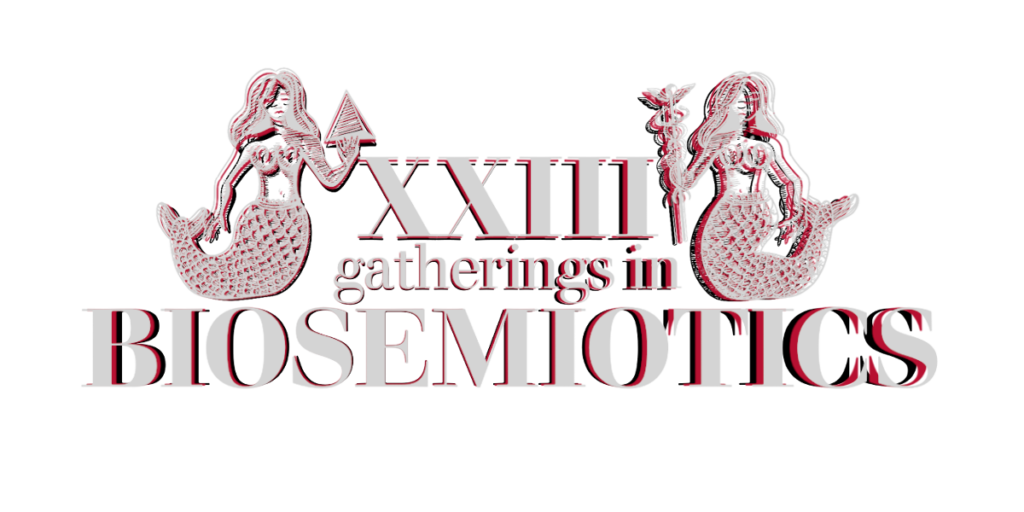The Concept of Umweb: On the Linkages between Umwelten
Kalevi Kull
Umwelt, the concept introduced by Jakob von Uexküll, has been commonly defined as the subjective world of organism. Once an organism can make distinctions, once it uses signs and can choose, there should also be its umwelt – its world with meanings. On a closer inspection, however, there are at least two different concepts behind this term, when taking into account the relationship with time: momentary and distributed.
Momentary umwelt is umwelt in its proper sense – the meaningful world of an organism. Meaning is the relation that exists now, at the present, atemporally (synchronically) in the subjective time. This is a simultaneous existence of distinguishables, which are the possibilities or the options for behaving. Distinction itself is a relation. Since such is the core sense of Uexküll’s concept – the subjective space in the identical time – we reserve the term umwelt to this concept.
Distributed umwelt is the web of meaning-relations over the course of time (diachronically), both intra- and inter-organismically. For this we propose the term umweb. Umweb is the whole set of sign relations that organisms have throughout their life. Umweb is the complex or nexus of habits. Habits are relations, and their relata can belong to one and the same organism, or to behaviourally linked organisms. Since such relations can include other organisms in one’s umweb, and sometimes mutually, it means that these organisms are semiotically linked. Through such relations, umwelten of different organisms are encompassed by the umweb.
There exist some close notions to umweb. Uexküll himself uses the term ‘umwelt tunnel’, meaning by this the temporal sequence of an organism’s subjective moments during its ontogeny or life cycle. We would describe umweb as the complex of semiotic relations in which the organism is involved, while umwelt tunnel is the sequence of momentary umwelten. Another concept somewhat close to umweb is ‘semiosphere’, the term introduced by Juri Lotman and later independently by Jesper Hoffmeyer. Semiosphere includes meaning-relations of all agents, thus serving as a cover term. Among close concepts we also find ‘Lebenswelt’ as a solely human umwelt, ‘actor-network’ as a material-semiotic network of agents, and ‘chronotope’ as the spacetime of a narrative.
Another theoretical innovation besides introducing the concept of umweb concerns the role of umwelt as such in the fundamental model of meaning making. Our point is that signs cannot be outside of an umwelt. This implies that semiotic research should not be limited to the study of signs; the larger whole, which is the umwelt, must always be included. This is what we would call umwelt-based semiotics. Accordingly, the relationship between sign, semiosis and umwelt has to be elaborated.
We are going to argue that in addition to Peircean semiotics, which is based on the concept of sign, and Saussurean semiology, which is based on structure and codes, semiotics can fundamentally be built on the Uexküllian concept of umwelt. Moreover, umwelt-based semiotics enables the integration of these rather separate and incompatible semiotic theories.
References
Kull, Kalevi (2022). Umwelt-based semiotics: Sign and meaning-structure presuppose umwelt. In: Paschalidis, Gregory et al. (eds.), 15th World Congress of Semiotics: Semiotics in the Lifeworld. Thessaloniki: IASS, p. 33.
Kull, Kalevi; Favareau, Donald (2022). Semiotics in general biology. In: Pelkey, Jamin; Walsh Matthews, Stéphanie (eds.), Bloomsbury Semiotics, vol. 2: Semiotics in the Natural and Technical Sciences. London: Bloomsbury Academic, 35–56.
Tønnessen, M.; Magnus, R.; Brentari, C. (2016). The biosemiotic glossary project: Umwelt. Biosemiotics 9(1): 129–149

